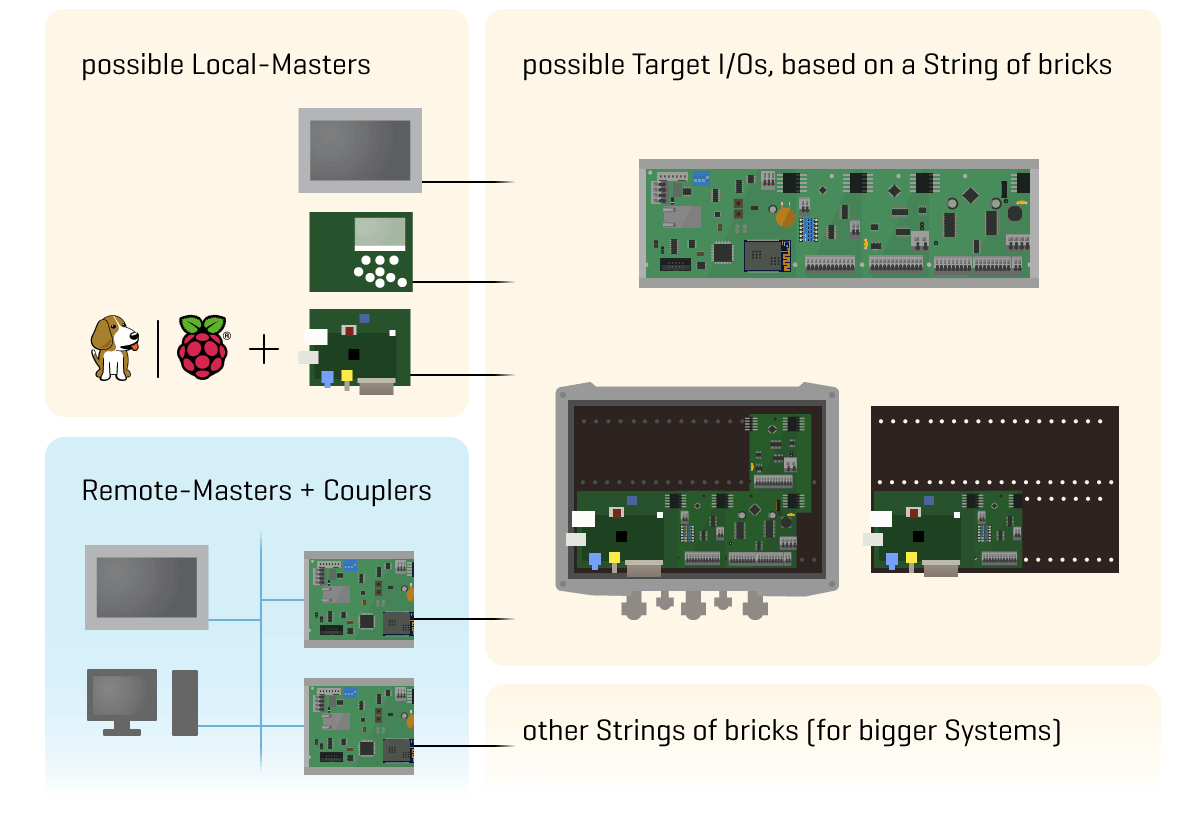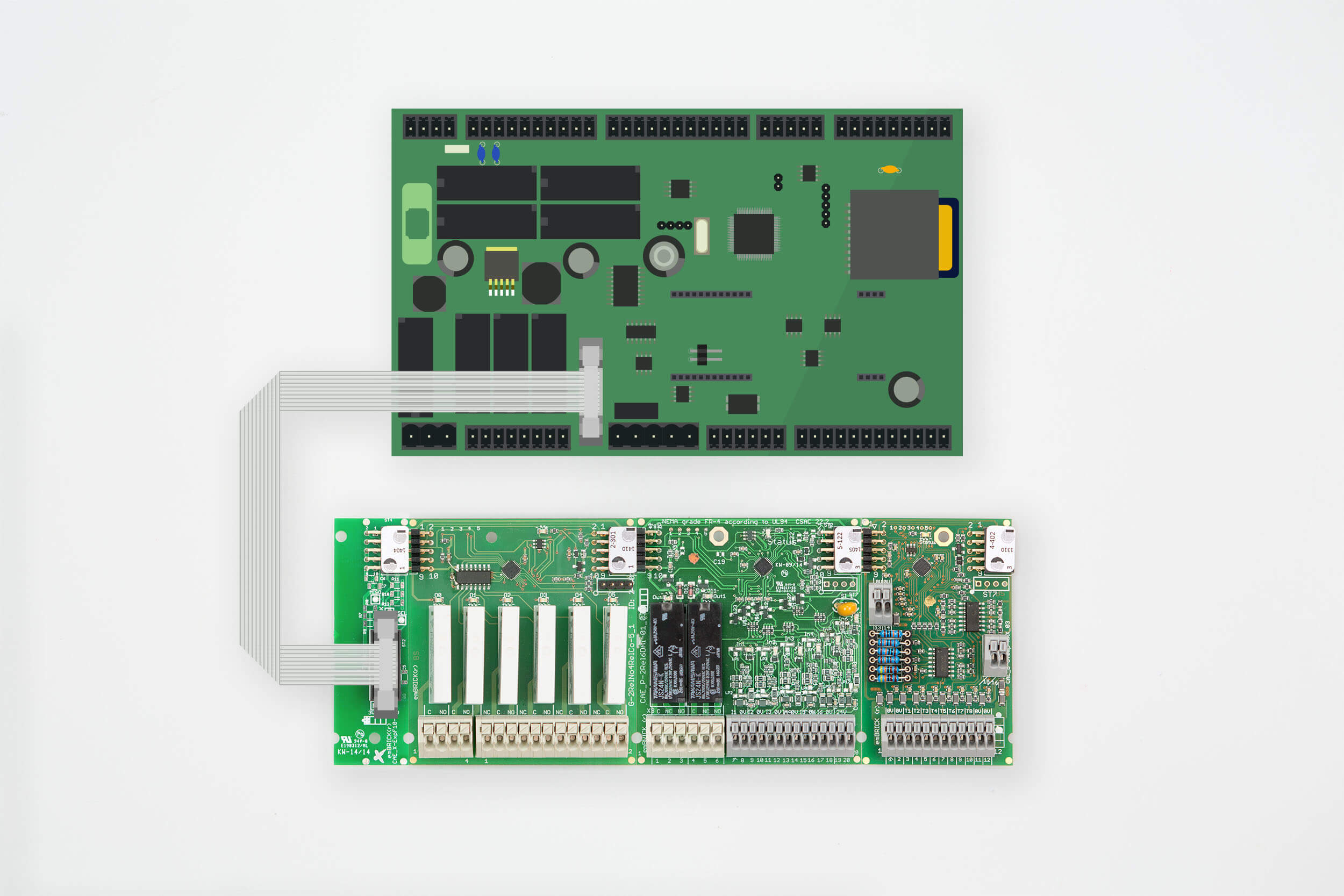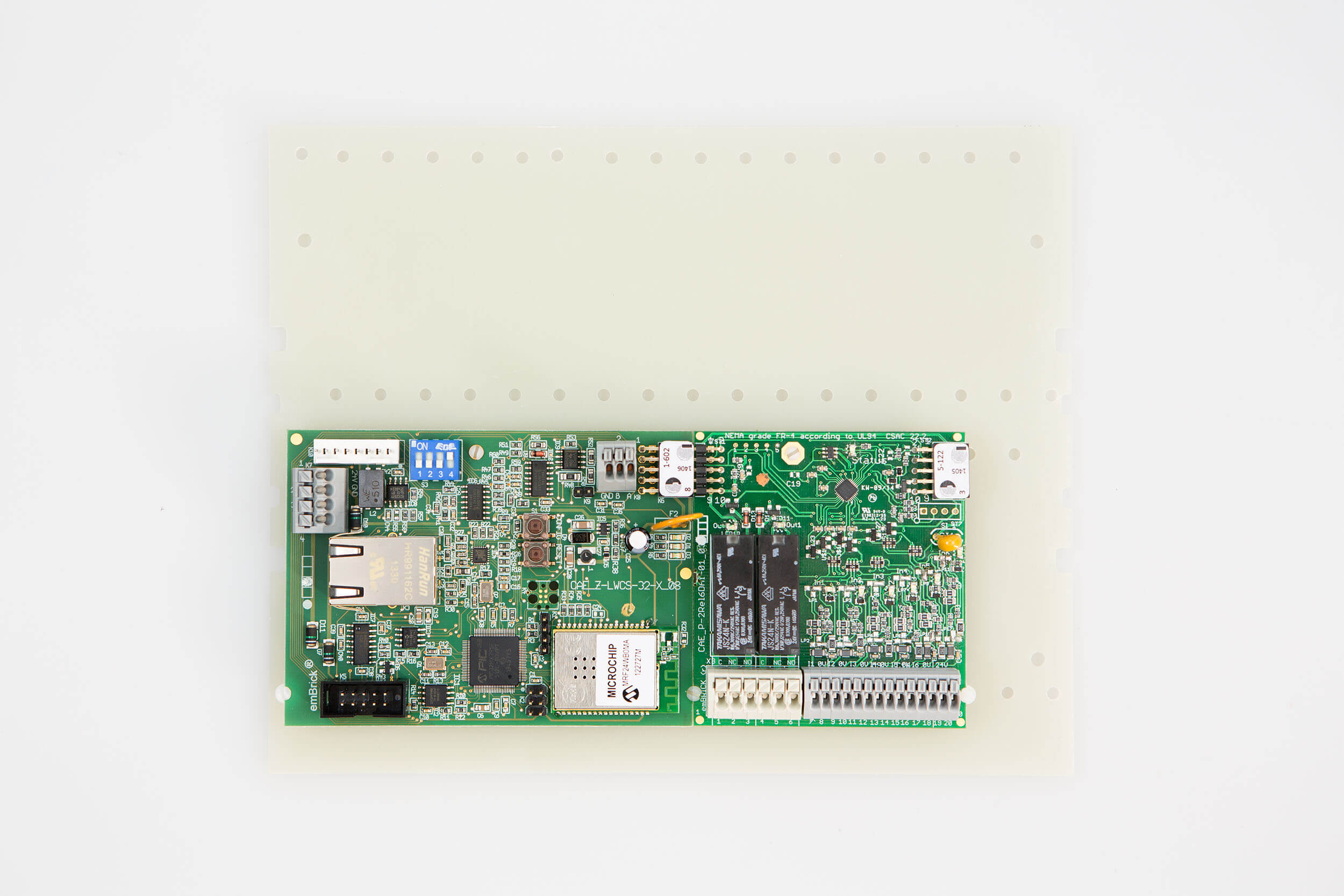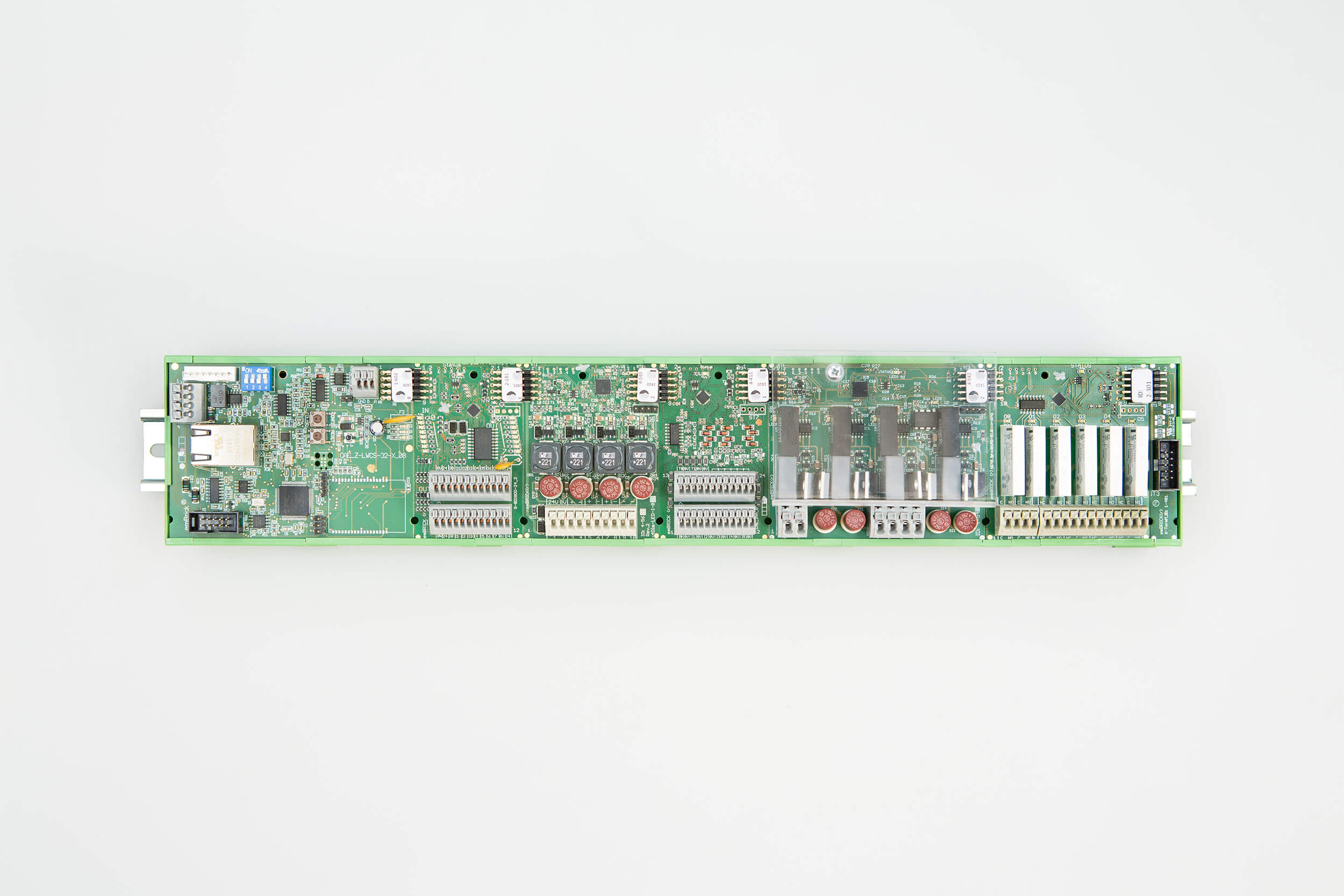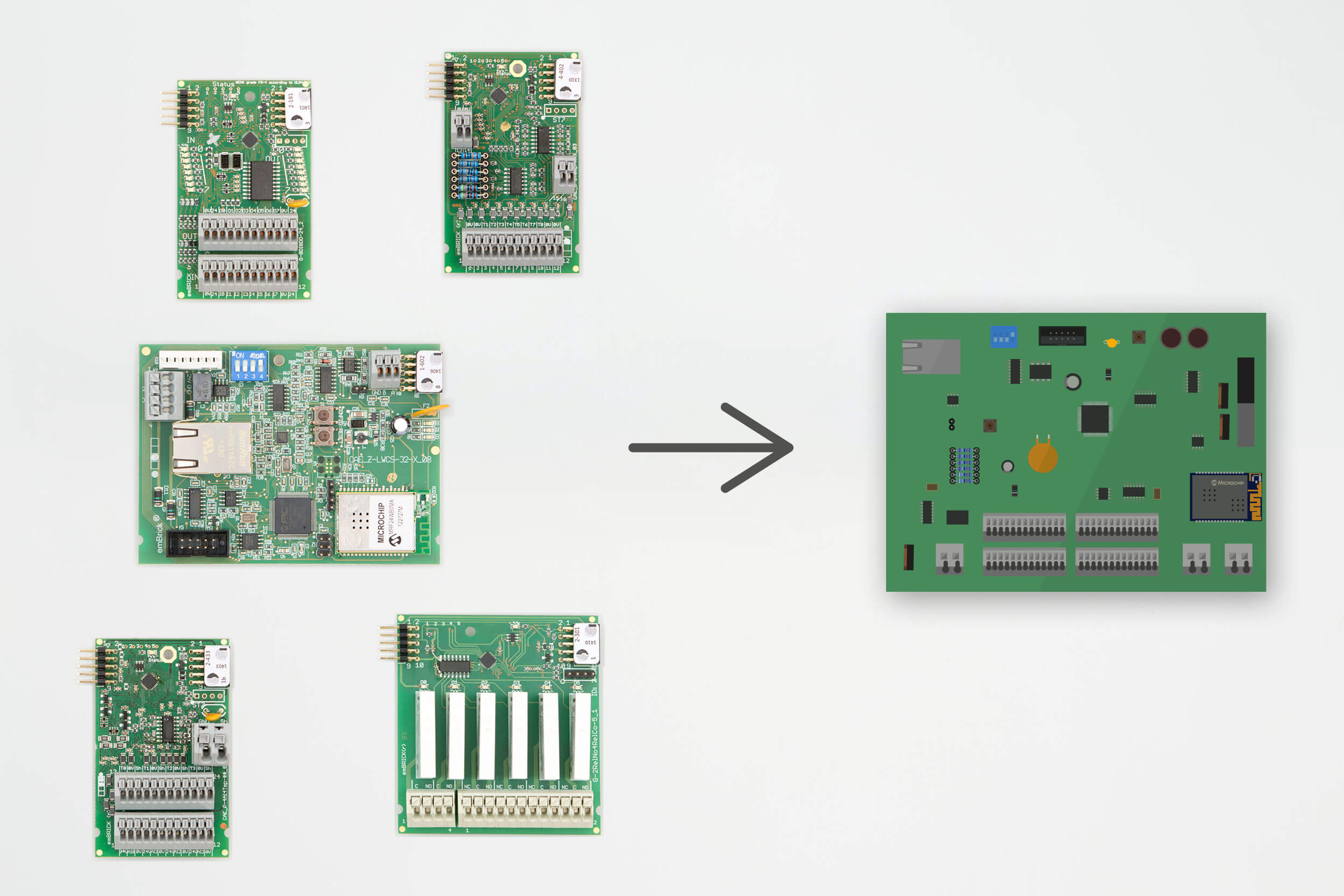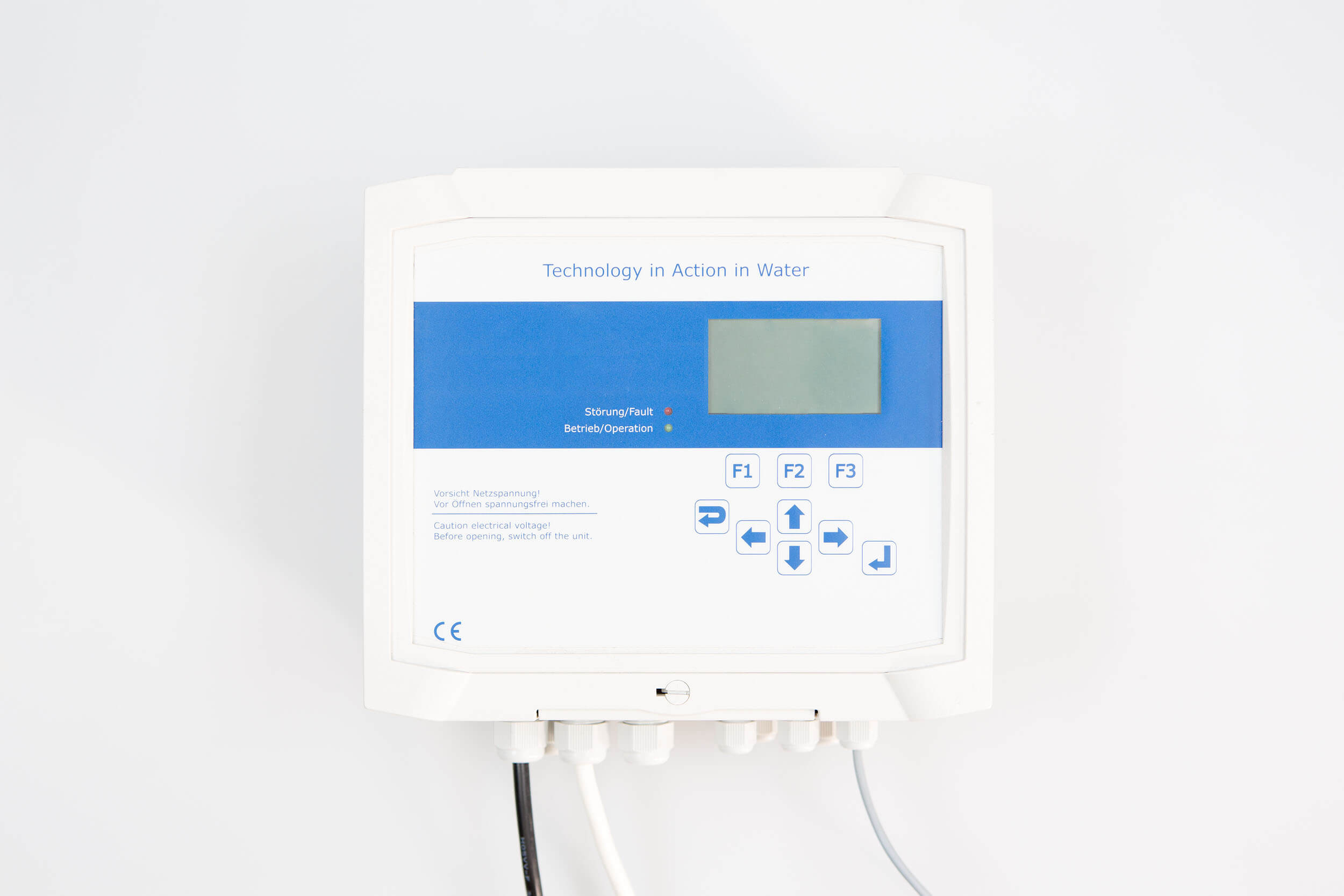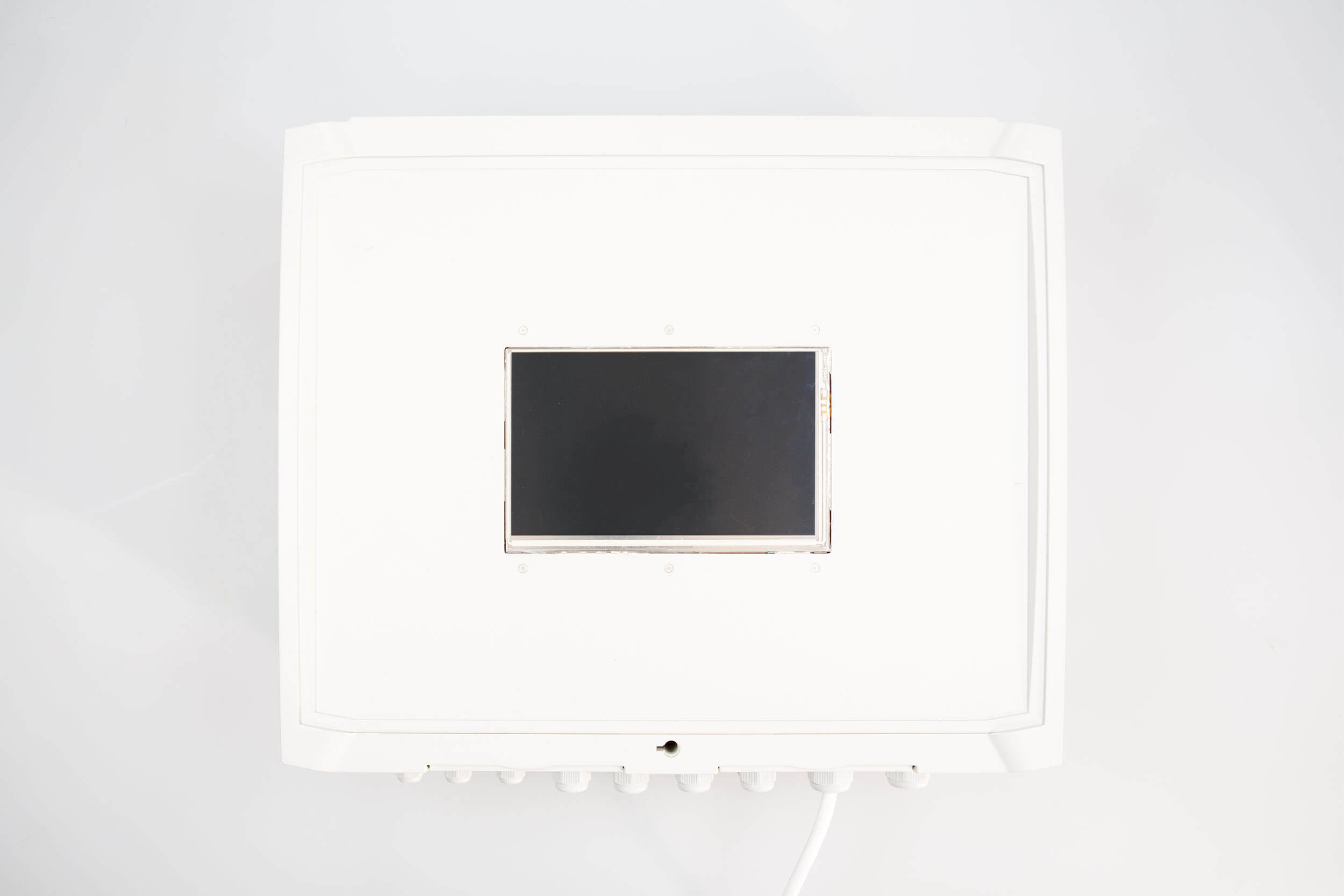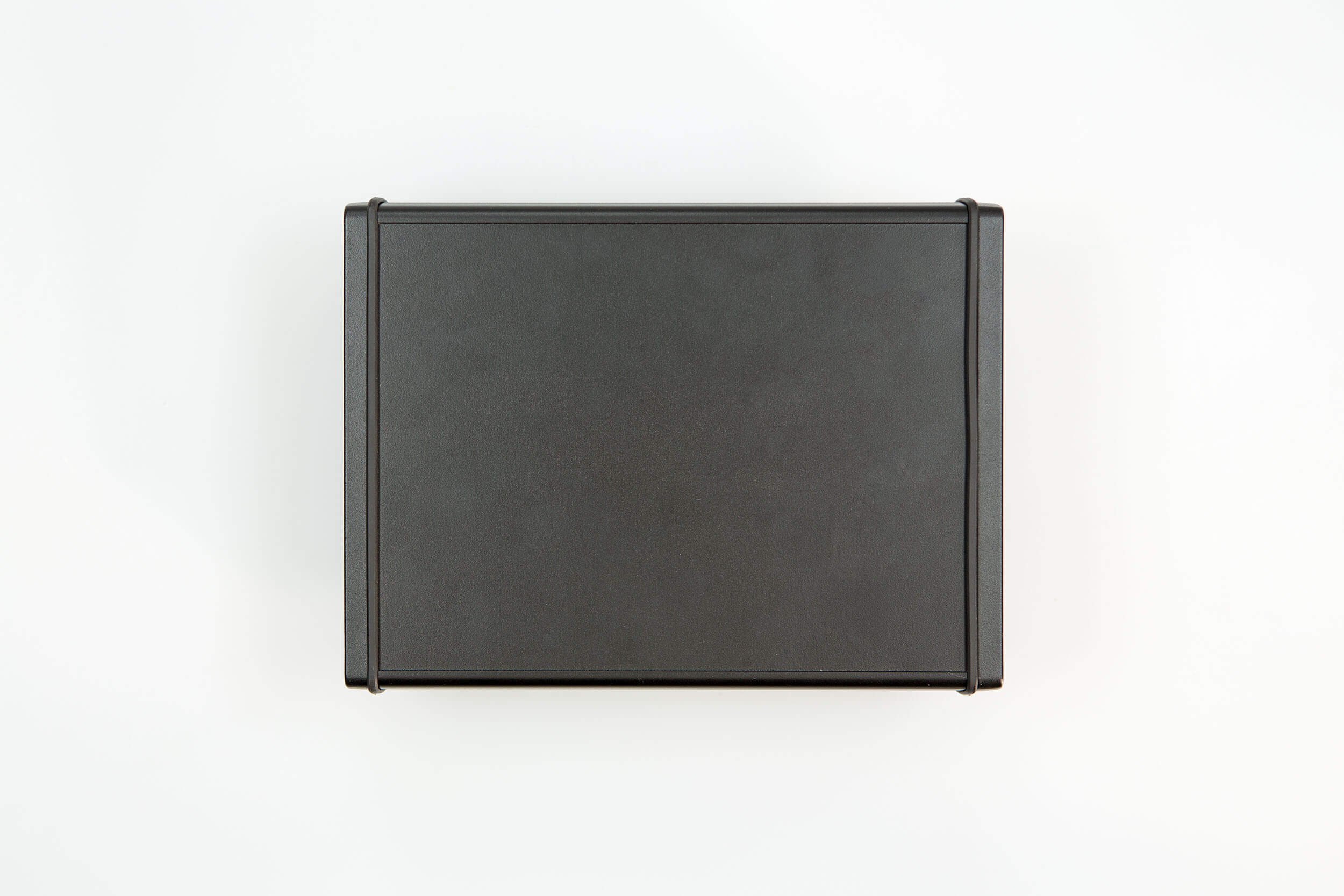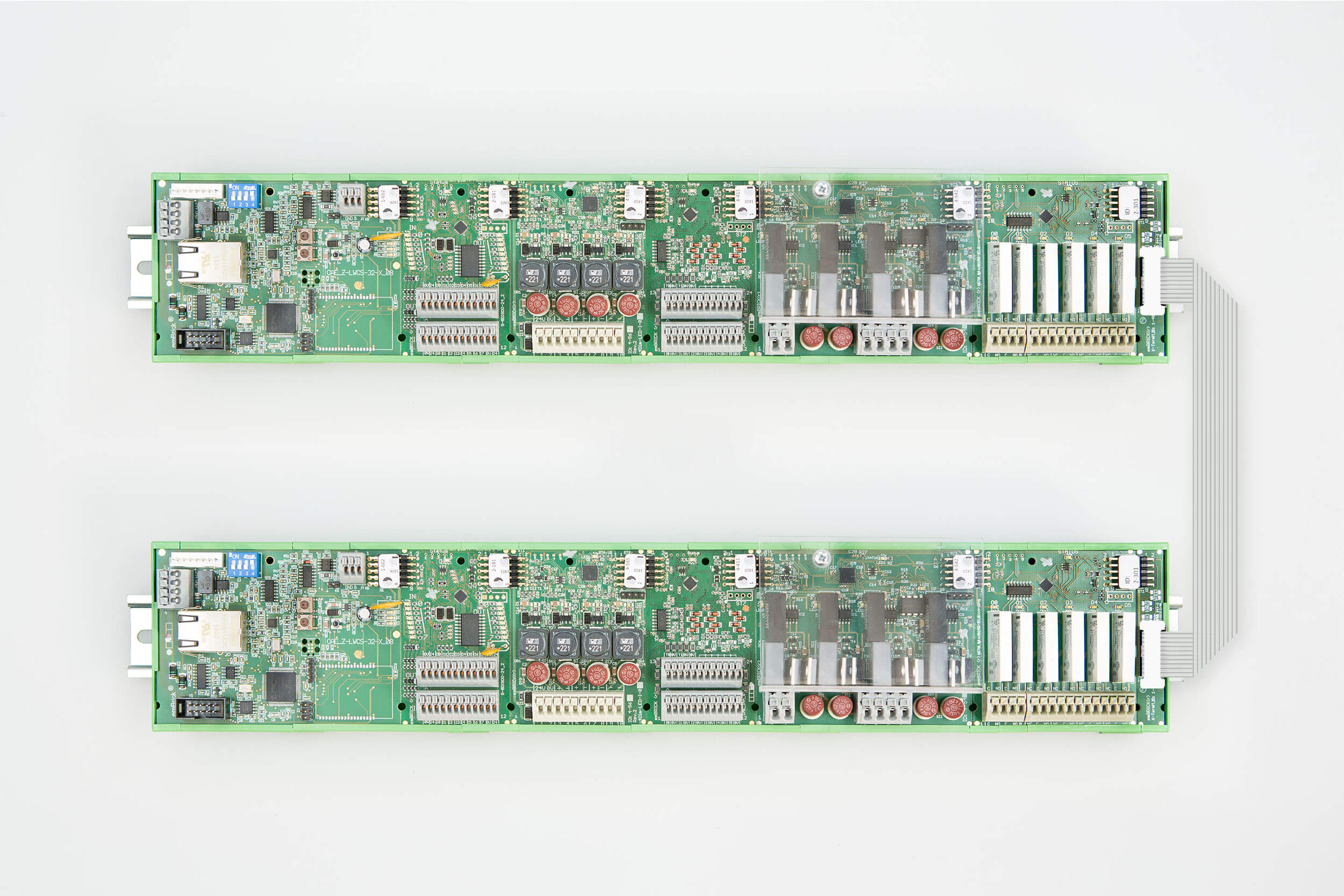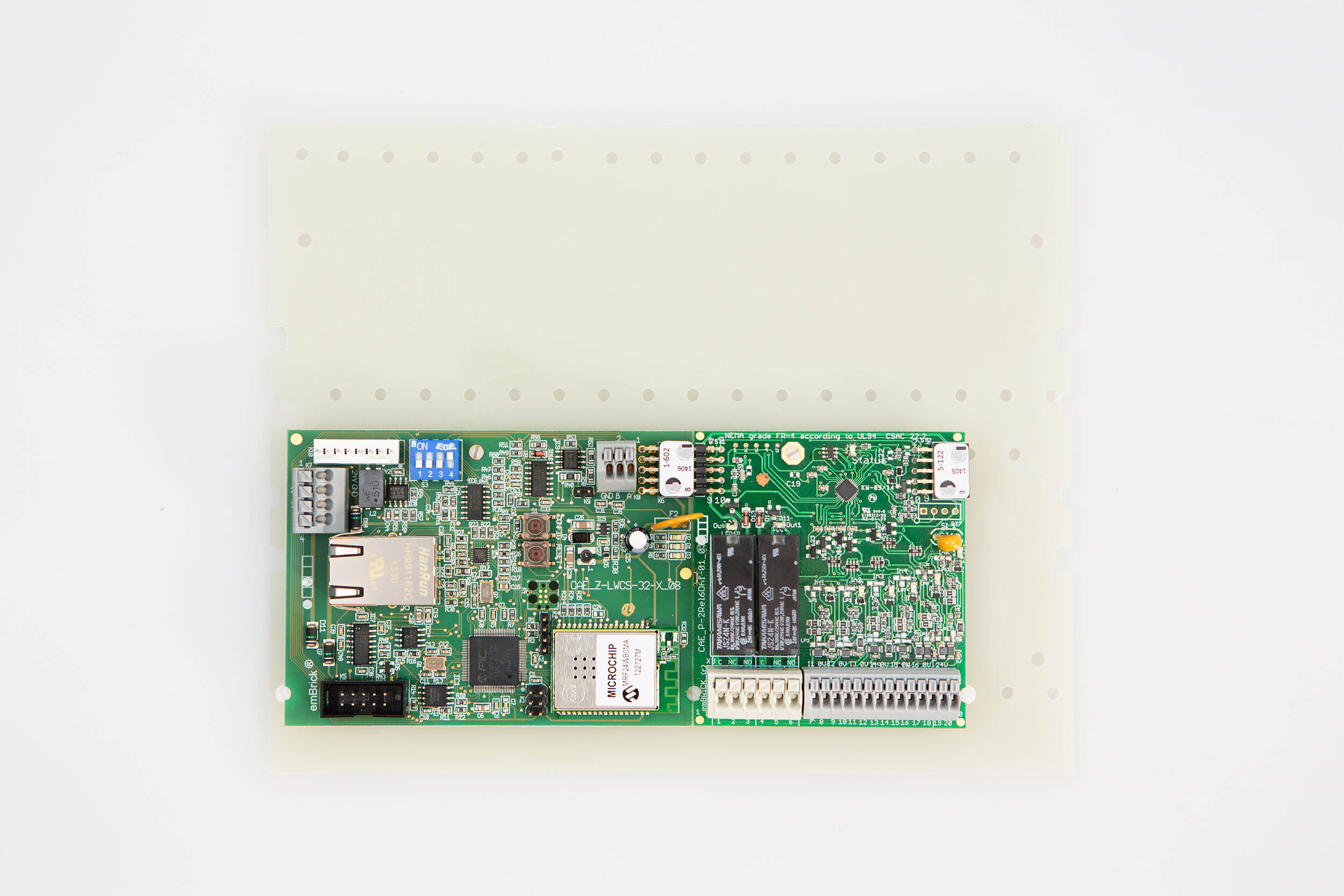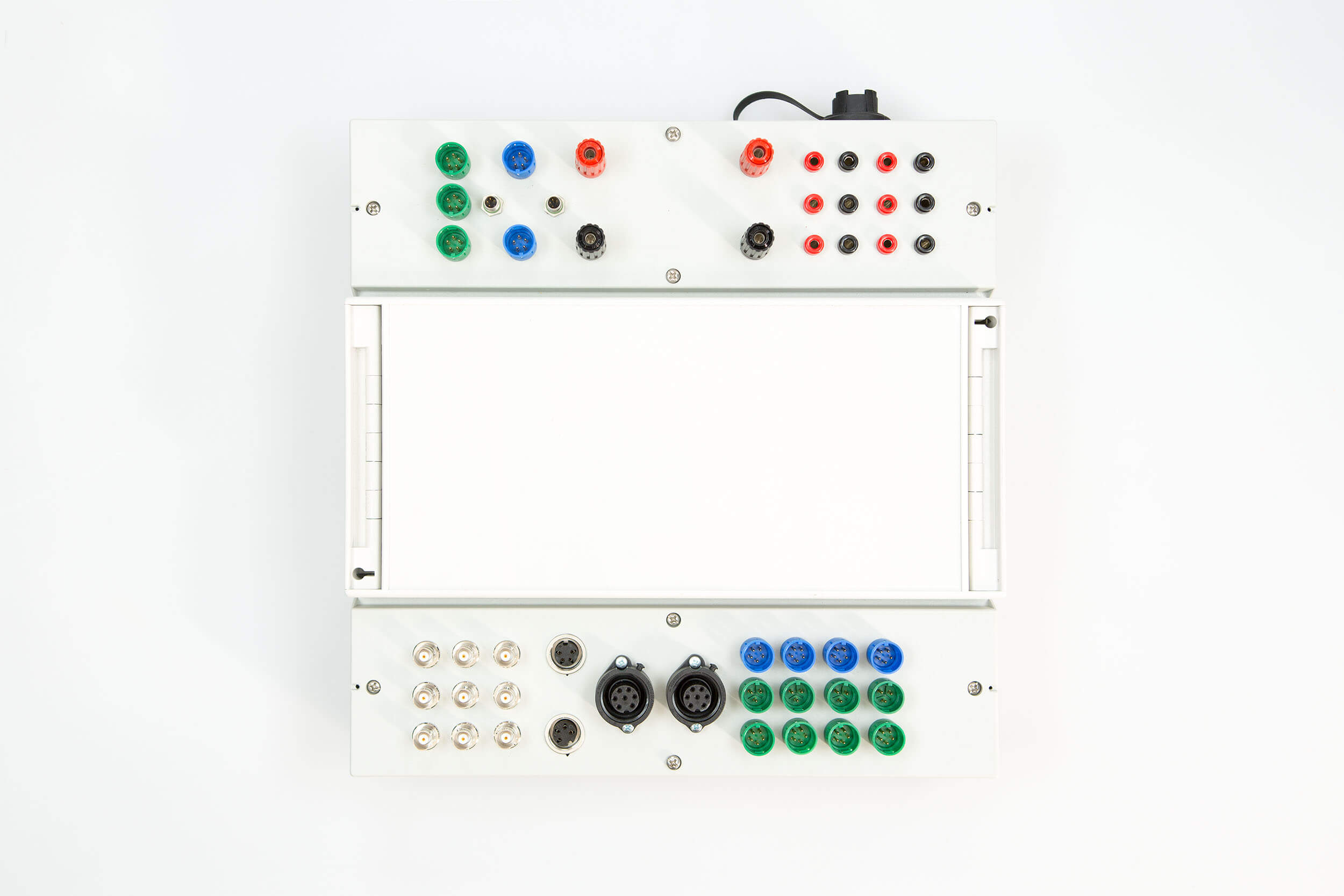EMBEDDED PATCH-BOARD CONTROLLER
emBRICK can be programmed by various system, languages and IDEs (integrated development interface). Currently for master units the following systems are available (others planed):
- OS/RTOS
Windows, Linux, FreeRTOS, proprietary - Programming languages
C, C++, IEC61131, Model-based (by implementing UML) - Model-based/Soft-PLC
CODESYS, radCASE, Enterprise Architect - C/C++, IDEs
MSVC, Cocox (GCC), MPLab (Microchip), Geany (Raspberry Pi), every other C/C++ IDE
For more details see Product Catalogue and Application Examples.
BASIC CHARACTERISTICS
- free – also for commercial use in own appliances (for pure EMS with a license fee)
- open – supplying reference schematics, protocol source code, samples and starter kits
- adaptable to all systems, using common, low cost standard µCs/components
- half … third price compared to common control systems (complete system view)
- scalable local and remote topologies, 1 … >1000 I/Os, up to 1ms update, deterministic
- low own power consumption, average 50mW/slave module in operation (outputs inactive)
- global and sector specific modules for direct connection of various sensors and actors
- easy installation, no configuration necessary, simple plug modules together and use
- works with / programmable by various established, well known platforms / languages
Available Host Platform, Connectivity
emBRICK can be adapted to all platforms with almost every footprint/performance. For master units, currently the following system implementations are available (others planed):
- Computer platforms PC, Embedded-PC, Module-PC, Raspberry Pi, Beaglebone Black
- µController platforms ARM-Ax, ARM-Cortex-Mx, Microchip PIC24 / PIC32
- Host Interfaces Ethernet, CAN, RS232, RS485
- Wireless Interfaces WLAN
TYPICAL USAGE
Merge – as customized/sectoral Board
For higher quantities (typical >250/a) it is possible to merge the circuits of multiple modules together and create a classic single-board I/O (by still using emBRICK hard- and software technology).
This avoids the add-on costs for the carrier board, the mounting and el. components whereby reaching the price of a typical embedded solution.

